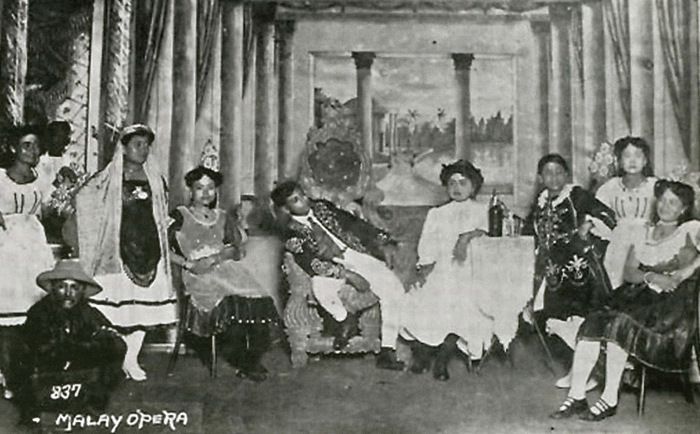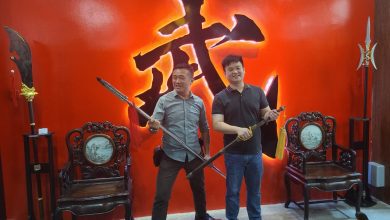Nostalgia: Bangsawan, the Malay Opera


By Ian Anderson
This photograph shows a Malay opera or Bangsawan troupe. Bangsawan is a form of traditional Malay opera or theatre that usually involves elements of drama, music, singing and dancing. The art form has its origins in the theatre of the immigrant Parsi community (Indians of Persian extract) in Malaya and was first performed in Penang in the 1870s. By the early 20th century, many Bangsawan troupes emerged and the theatre form soon spread to other parts of Malaya.


Bangsawan in Kinta
The first-known troupe in Kinta consisted mainly of Orang Asli (Senoi) musicians, singers and dancers, both male and female, who emerged from Teaw Batu’ in Kinta in the late 1920s. It was led by a Malay, Pak Aji Kassim, from Tapah, who selected the Semoi, trained them and introduced them to the entertainment world. They performed across Kinta from Teluk Anson in the south to Ipoh and in those days young Senoi girls would also join the artists as Ronggeng dancers. Known as ‘Taxi Dancers’ they were very popular with Malay men.
One of the well-known Bangsawan dancers from Kinta was Menah Yem, who started performing at the age of nine. When she was about 12 years old, the “Queen of the Dance” fell in love with, and married, the Bangsawan hero Pak Yem.
The Shaw Brothers Get Involved
In the 1930s Pak Yem borrowed $5000 from the Shaw brothers, Run Run and Run Me, who had founded the Shaw Organisation in 1924 in Singapore. With the loan, Pak Yem founded the ‘Grand Nooran Opera’ and signed a contract to perform in all the Shaw Brothers’ parks in Malaya. Ipoh’s own Jubilee Park featured them, but in addition the Shaws had their own troupe in Ipoh, the ‘Grand Jubilee Opera’. These Bangsawan stars were employed under contract in these amusement parks and were later engaged by Shaw Brothers to act in the movies.
The Japanese Occupation
Bangsawan continued to prosper during the Japanese Occupation and was advertised regularly on the back page of The Perak Times, a Japanese daily newspaper in English, printed and published at 62-64 Belfield Street, Ipoh, by John Victor Morais (1910-1991), a prominent Malaysian writer and journalist of south Indian origin, who later edited the Malaya Tribune and the Ipoh Daily News. On July 12, 1943, the paper published an advertisement by the ‘Sri Arjuna Bangsawan Group’, including the shows ‘Anak Di Luar Nikah’, ‘Raja Laksamana Bintan’, ‘Pulau Pandan Gunung Diak (Daik?)’ and ‘Dan Dan Stia,’ (described as “That Grand Malai Historical Play You’ve All Been Anxiously Waiting To See! To Be Completed In 5 Nights”).
After the war, Jubilee Park was the main entertainment centre and continued featuring Bangsawan and Ronggeng dancers. In 1950 the entrance fee to the park was 20 cents, while dance tickets were 42 cents per dance. Today Jubilee Park and its entertainers are no more, but Bangsawan continues.
Source: IpohWorld


